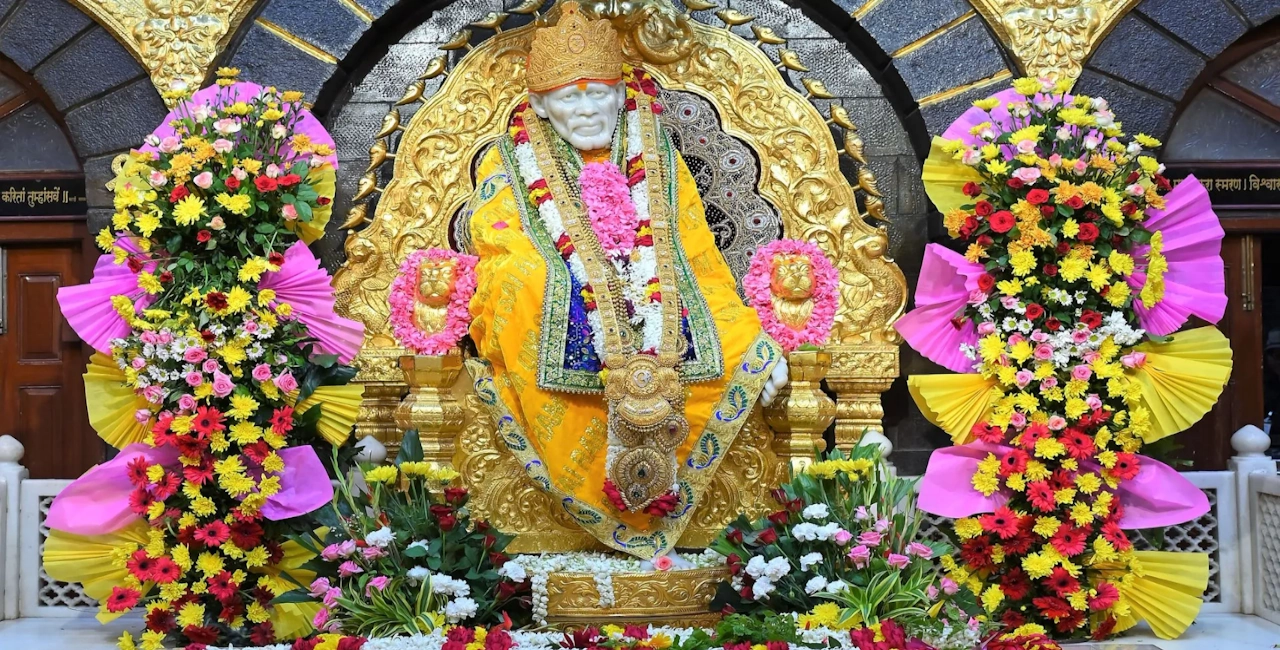Shirdi, a small town in Maharashtra, India, holds a special place in the spiritual landscape of the country. Known primarily as the home of Sai Baba, a revered saint and spiritual leader, Shirdi attracts millions of devotees from around the globe. The town’s significance goes beyond its spiritual heritage; it embodies a unique blend of faith, devotion, and cultural richness that continues to resonate with people of all backgrounds.
The Life and Legacy of Sai Baba
Sai Baba of Shirdi, also known simply as Sai Baba, was a mystic and spiritual teacher who lived in the late 19th and early 20th centuries. His origins remain shrouded in mystery, with various accounts suggesting that he was born in the mid-19th century, possibly in a village in Maharashtra or Karnataka. Sai Baba’s life was marked by his profound wisdom, compassion, and miracles, which he performed to help those in need and to spread his teachings.
Sai Baba did not belong to any specific religious tradition but instead taught a message of universal love, tolerance, and devotion. He encouraged his followers to rise above sectarian divides and embrace the essence of all religions. His famous teachings, such as “Sabka Malik Ek” (One God governs all), reflect his inclusive and compassionate approach to spirituality.
Shirdi: The Spiritual Epicenter
Shirdi’s transformation into a major pilgrimage site began after Sai Baba’s death in 1918. His residence, which he called “Dwarkamai,” has been converted into a prominent shrine, now known as the Sai Baba Temple. This temple is the focal point of Shirdi and draws millions of visitors each year who come to pay their respects, seek blessings, and connect with the spiritual legacy of Sai Baba.
The Sai Baba Temple, with its grand architecture and serene atmosphere, is a symbol of devotion and reverence. The temple complex houses several important sites, including the Samadhi Mandir, where Sai Baba’s mortal remains were interred. The Samadhi Mandir is the main prayer hall and is visited by devotees who come to offer flowers, light lamps, and participate in the daily rituals.
Pilgrimage and Devotion
The pilgrimage to Shirdi is an experience marked by both devotion and community spirit. Devotees from various parts of India and the world make the journey to Shirdi, often traveling long distances to reach the sacred town. The atmosphere in Shirdi is vibrant and charged with spiritual energy, with devotees engaging in prayers, participating in devotional singing, and partaking in the temple’s prasadam (sacred offerings).
Shirdi’s significance extends beyond the Sai Baba Temple. The town is also home to other important sites associated with Sai Baba’s life. The Chavadi, where Sai Baba used to sleep on alternate nights, is another key location. Similarly, the Khandoba Temple and the Sai Baba Museum offer insights into Sai Baba’s life and teachings.
Cultural and Social Impact
Shirdi is not just a spiritual destination but also a center of cultural and social activities. The town’s growth has been fueled by its status as a pilgrimage site, leading to the development of infrastructure and services to accommodate the influx of visitors. Local businesses, hotels, and restaurants thrive due to the steady stream of pilgrims, contributing to the town’s economic development.
Moreover, Shirdi has become a melting pot of diverse cultures and languages, with devotees from various regions and backgrounds coming together in the shared spirit of devotion. This cultural amalgamation enriches the town’s social fabric and fosters a sense of unity and mutual respect among its inhabitants.
Challenges and Preservation Efforts
Despite its spiritual significance, Shirdi faces challenges such as managing the large number of visitors and maintaining the town’s infrastructure. The authorities have been working to improve facilities and ensure that the influx of pilgrims does not adversely affect the town’s environment and resources. Efforts are also being made to preserve the historical and cultural heritage of Shirdi, ensuring that the town remains a sacred and welcoming place for future generations.
Conclusion
Shirdi stands as a beacon of spiritual devotion and cultural harmony. The legacy of Sai Baba continues to inspire millions, transcending geographical, religious, and cultural boundaries. For many, Shirdi is not just a place to visit but a journey into the heart of faith, compassion, and unity. It serves as a reminder of the power of spiritual teachings to bring people together and to offer solace and guidance in a world that often seeks meaning and connection. Whether one is drawn by devotion, curiosity, or the search for spiritual growth, Shirdi remains a timeless sanctuary where the divine and the earthly converge.


0 Comment